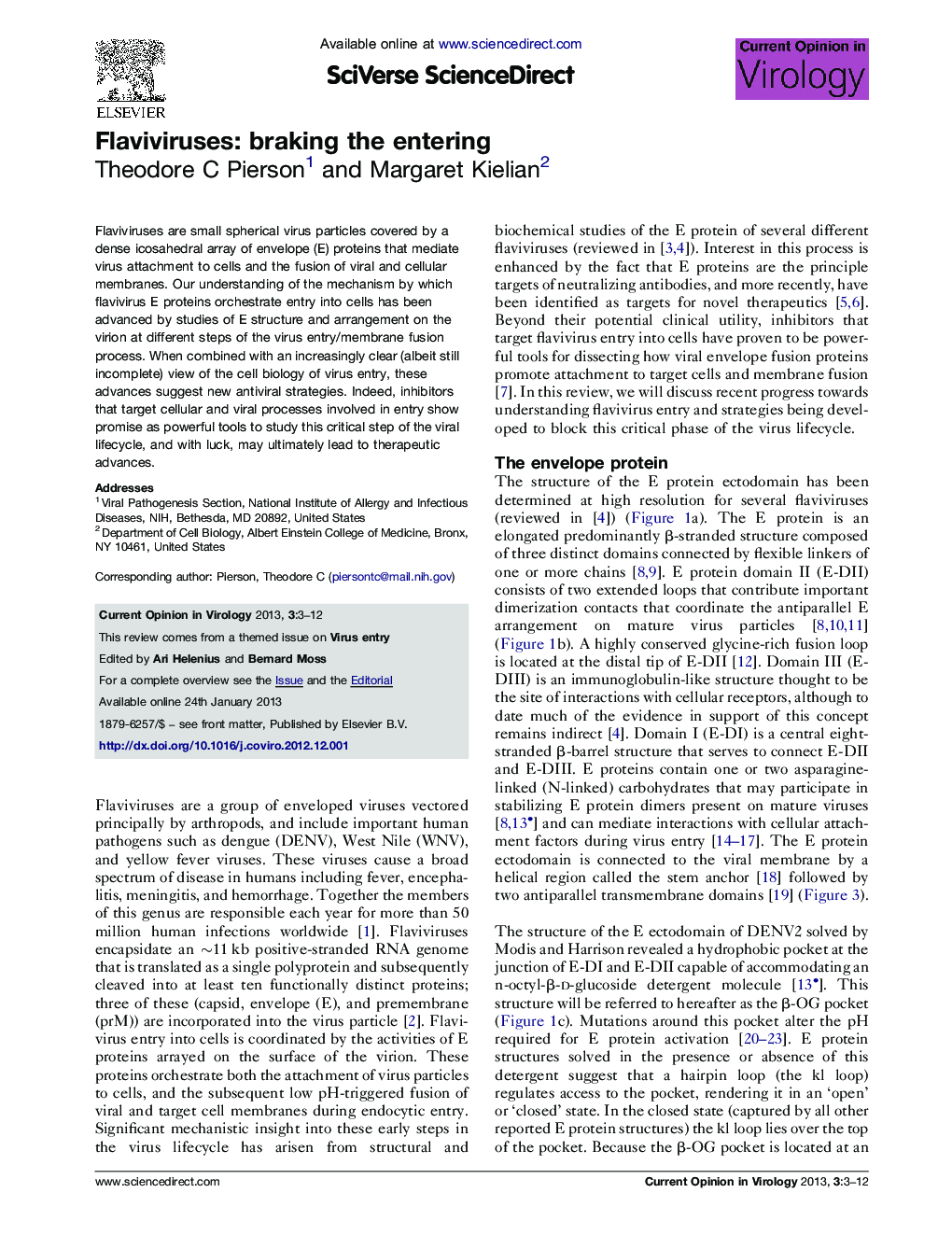| Article ID | Journal | Published Year | Pages | File Type |
|---|---|---|---|---|
| 2473517 | Current Opinion in Virology | 2013 | 10 Pages |
Flaviviruses are small spherical virus particles covered by a dense icosahedral array of envelope (E) proteins that mediate virus attachment to cells and the fusion of viral and cellular membranes. Our understanding of the mechanism by which flavivirus E proteins orchestrate entry into cells has been advanced by studies of E structure and arrangement on the virion at different steps of the virus entry/membrane fusion process. When combined with an increasingly clear (albeit still incomplete) view of the cell biology of virus entry, these advances suggest new antiviral strategies. Indeed, inhibitors that target cellular and viral processes involved in entry show promise as powerful tools to study this critical step of the viral lifecycle, and with luck, may ultimately lead to therapeutic advances.
► The flavivirus membrane contains a dense and organized array of E proteins that mediate receptor binding and membrane fusion. ► Flaviviruses are heterogeneous and dynamic structures that may interact with cells via surfaces not predicted by existing models. ► The functions of host proteins in virus binding and endocytic uptake remain largely undefined. ► Recent advances in our understanding of virus fusion suggest potential antiviral targets. ► Inhibitors that block distinct steps of virus fusion have been identified.
